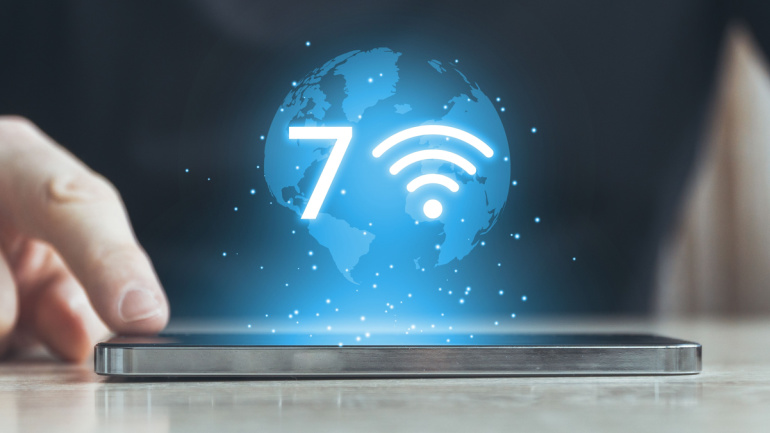EchoStar, in a strategic partnership with The Things Industries, enriches its European IoT strategy by introducing a terrestrial element. With The Things Industries’ unique server technology, EchoStar aims to facilitate uninterrupted, real-time communication for IoT devices via terrestrial or satellite channels. While no specific application cases were disclosed, a limited-time trial service provides customers with a glimpse into their orchestrated offerings.
“Project Gigabit”, the UK government’s £2 billion initiative, aims to expand high-speed broadband in hard-to-reach communities. With a vision of future-proofing Britain’s connectivity, the project seeks to connect 80% of the nation by 2025. However, ensuring equal internet access brings pressing questions, such as the cost-effective efficiency of Low Earth Orbit satellites and balancing 4G and 5G network enhancements to avoid inadvertent digital inequality.
T-Mobile US’s reported negotiations with Tillman FiberCo to utilize their fiber-to-the-premises (FTTP) infrastructure could significantly shape the retail fiber market. T-Mobile previously expressed interest in the fiber broadband sector, and partnering with Tillman could mitigate potential expenses of such endeavor. This potential venture aligns with Tillman’s recent strategic alliance with Northleaf Capital Partners, pooling $200 million for the FTTP rollout. While coverage plans remain unclear, this project is likely substantial and may lead to T-Mobile formally stepping into the fiber broadband landscape.
Prominent UK telecom companies like BT, VMO2, and Vodafone have been selected beneficiaries of government funding for research into Open RAN technology. Innovative projects, with a focus ranging from energy efficiency to security, will share in the £88 million ($121 million) funding. The main goal is to figure out whether Open RAN can rival traditional RAN, especially in high-traffic areas and rural deployments, in terms of cost, reliability and energy consumption.
Dutch telecom company Veon is adjusting the course of its Russian sector, VimpelCom’s, management buyout, initially agreed for $2.1 billion. The transaction now fully hinges on VimpelCom absorbing part of Veon’s debt – a method born from necessity as sanctions hamper Russian financial institutions. This strategic exit is further complicated by EU sanctions on Russia’s National Settlement Depository inhibiting interest collection on Veon’s Eurobonds.
In a bold move set to enhance its spectrum capabilities, T-Mobile US is poised to acquire Comcast’s 600 MHz frequencies, in a deal worth up to $3.3 billion. With 39 million subscribers potentially impacted, this decision reconfirms T-Mobile’s commitment to streamlining its 600 MHz range, especially in key US cities. It’s worth noting that despite the ambitious agreement, Comcast retains the rights to exclude any licenses before completion. The deal serves both parties well, promising to augment T-Mobile’s already substantial frequencies and refresh Comcast’s spectrum focus on high traffic areas.
The surging interest in cloud-based applications represents a flourishing sector of the tech sphere, by providing an enhanced user experience and considerable savings on terminal investments. Telecommunication giant, ZTE, demonstrates this potential with their virtual STB (vSTB) solution in the television industry – a pioneering effort that bypasses traditional terminal downturns hampering TV service expansion. This solution effectively confronts challenges of limited service quality and hard adaptation processes linked with operator TV services, and eliminates sizable terminal outlays. Similarly, the cloud STB product presented by China Mobile and ZTE capitalises on China Mobile’s robust computing capacities and thus streamlines content broadcast to every terminal.
Telecom equipment expenditure in North America experienced an unexpected downturn in the first half of this year. Despite global telecom hardware revenues remaining steady, North America’s marked decline significantly impacted the total number. In contrast, other markets, particularly Asia-Pacific, showed robust growth. The reasons behind North America’s decline extend to slowing 5G expenditure and reduced spending on broadband access equipment. Looking ahead, no major global alterations are anticipated, though the volatility of the telecom industry hints at potential changes.
Brought forth by the Wireless Broadband Alliance (WBA), the exciting implementation of Wi-Fi 7 offers to revolutionize our wireless possibilities. This tech breakthrough, outpacing previous Wi-Fi versions, promises double the bandwidth and triple the speed, enabling impractical or seemingly impossible applications to become reality. The technology, based upon the IEEE 802.11be standard, will enable channel widths up to 320 MHz and support 4k QAM. With the potential for widespread deployment, Wi-Fi 7’s multi-link operation could mark a future with enhanced Wi-Fi experiences and low-latency immersive applications. However, the prerequisites of a solid fiber connection highlight challenges in achieving full-scale benefits.
Deutsche Telekom has made a significant stride in mobile telecommunications, achieving 12 gigabits per second in field tests using 6GHz frequencies – quite a leap from the current 5G network speeds. The German telecom giant credits this achievement to merging two data streams from different frequency antennas, a method they suggest may become standard for these bands. However, before this breakthrough can materialize, it’ll go under scrutiny during the upcoming ITU World Radiocommunications Conference.













